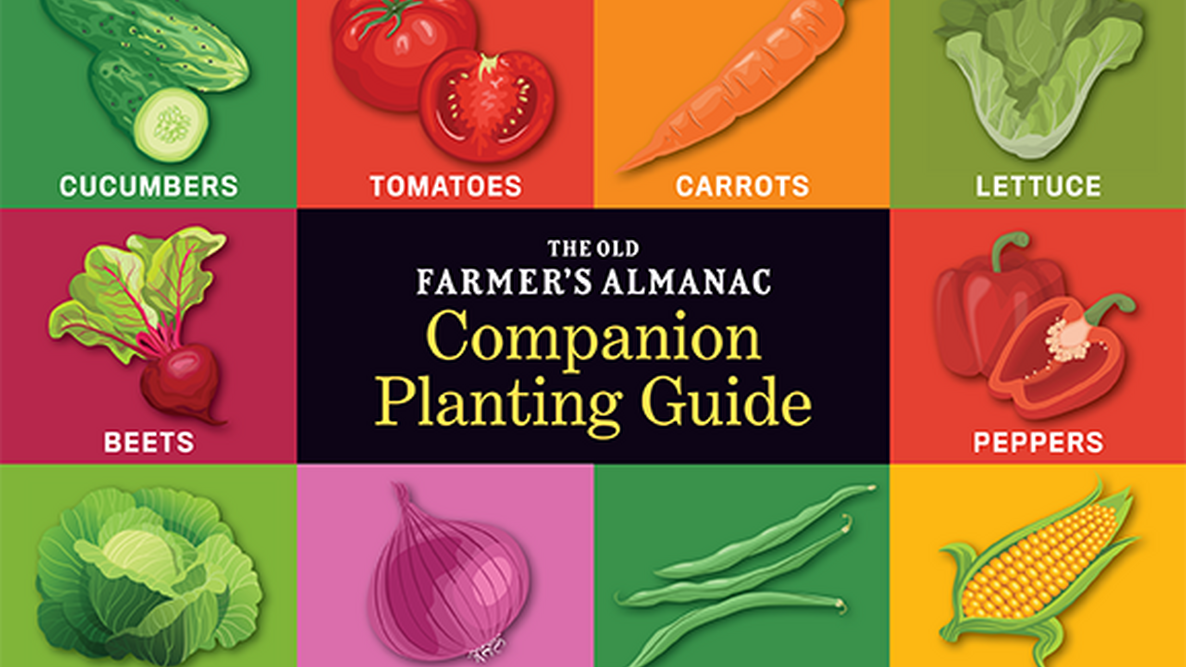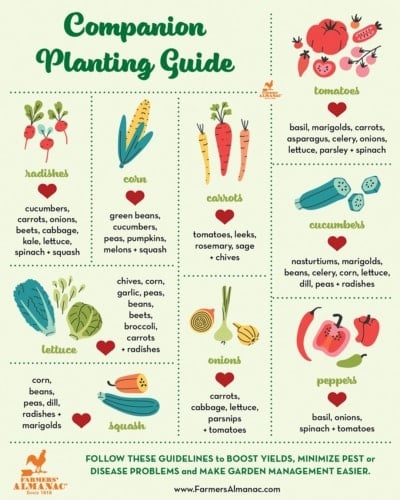The Farmer's Almanac Companion Planting Chart: The Ultimate Guide To Growing A Healthy Garden
The Farmer's Almanac Companion Planting Chart: The Ultimate Guide to Growing a Healthy Garden
Companion planting is a gardening practice that involves planting certain plants together to benefit each other. Some plants can help to attract beneficial insects, deter pests, or improve the soil quality. By planting the right plants together, you can create a more balanced and productive garden.
The Farmer's Almanac Companion Planting Chart is a comprehensive guide to companion planting. It lists hundreds of different plants and their best companions. The chart is divided into different sections, including vegetables, fruits, herbs, and flowers. Each section includes a list of plants that are beneficial to each other, as well as plants that should be avoided planting together.
The Farmer's Almanac Companion Planting Chart is a valuable resource for any gardener. It can help you to create a more productive and pest-free garden. If you are new to companion planting, the chart can provide you with a starting point. If you are an experienced gardener, the chart can help you to fine-tune your planting plans.
Here are some of the benefits of companion planting:
- Attract beneficial insects. Many flowers and herbs attract beneficial insects, such as ladybugs, lacewings, and parasitic wasps. These insects help to control pests, such as aphids, caterpillars, and beetles.
- Deter pests. Some plants have strong scents that can deter pests. For example, marigolds can help to repel nematodes, which are microscopic worms that can damage roots.
- Improve soil quality. Some plants, such as legumes, fix nitrogen in the soil. This means that they can provide nitrogen to other plants, which can help to improve their growth.
- Reduce competition for resources. When plants are planted together that have different water and nutrient needs, they can help each other to thrive. For example, tomatoes and cucumbers have different water needs, so planting them together can help to ensure that they both get the water they need.
If you are interested in learning more about companion planting, the Farmer's Almanac Companion Planting Chart is a great resource. You can also find more information online or at your local library.
Here are some additional tips for companion planting:
- Consider the plants' growth habits. Some plants, such as peas and beans, grow vining and can quickly take over a garden bed. If you are planting these types of plants, be sure to give them enough space to grow.
- Take into account the plants' sunlight and water needs. Some plants, such as tomatoes and peppers, need full sun and plenty of water. If you are planting these types of plants together, be sure that they will have the same growing conditions.
- Experiment. There is no one-size-fits-all approach to companion planting. The best way to find out what works for you is to experiment. Try planting different combinations of plants and see how they do.
Companion planting is a fun and easy way to improve your garden's health and productivity. By following the tips in this blog post, you can create a more balanced and pest-free garden.
The Farmer's Almanac Companion Planting Chart is a comprehensive guide to which vegetables and flowers grow best together. It's a great resource for gardeners of all levels, from beginners to experienced growers.
The chart is divided into two sections: Friends and Foes. Friends are plants that benefit each other when grown together. For example, basil helps repel aphids from tomatoes, and marigolds attract beneficial insects that help control pests. Foes are plants that should not be grown together, as they can compete for nutrients or water, or even stunt each other's growth.
The chart also includes information about the benefits of companion planting, such as:
- Reduced pest pressure: Companion plants can help to attract beneficial insects and repel pests, which can help to reduce the need for pesticides.
- Improved pollination: Some companion plants can help to attract pollinators, which can help to improve the pollination of your crops.
- Enhanced growth: Companion plants can help to improve the growth of each other by providing shade, nutrients, or water.
If you're looking to improve your garden's productivity and health, the Farmer's Almanac Companion Planting Chart is a valuable resource. To learn more, visit Gardenia Inspiration.
FAQ of farmers almanac companion planting chart
- What is companion planting?
Companion planting is a gardening technique where different plants are strategically placed next to each other to benefit each other. Some plants help to repel pests, while others help to improve the soil or attract pollinators.
- Where can I find a companion planting chart?
There are many different companion planting charts available online and in gardening books. The Farmers Almanac companion planting chart is a popular resource that lists which vegetables and flowers are compatible with each other.
- How do I use a companion planting chart?
To use a companion planting chart, first identify the vegetables or flowers that you want to grow in your garden. Then, look up each plant on the chart to see which other plants are compatible with it. You can then plant these compatible plants together in your garden.
- What are some of the benefits of companion planting?
There are many benefits to companion planting. Some of the most common benefits include:
- Reduced pest problems: Companion plants can help to repel pests and attract beneficial insects, which can help to keep your garden healthy.
- Improved soil quality: Some companion plants can help to improve the soil quality, which can benefit all of the plants in your garden.
- Increased yields: Companion planting can help to increase the yields of some crops.
- Enhanced flavor: Some companion plants can enhance the flavor of other crops.
- What are some of the challenges of companion planting?
There are a few challenges to companion planting. One challenge is that it can be time-consuming to research which plants are compatible with each other. Another challenge is that companion planting may not work for all gardens. For example, if you have a small garden, you may not have enough space to plant all of the compatible plants.
Image of farmers almanac companion planting chart
Here are 5 different images of "farmers almanac companion planting chart" from Pinterest:
- Image 1: This image shows a color-coded companion planting chart from the Farmers' Almanac. The different colors indicate different relationships between plants, such as "beneficial," "neutral," and "detrimental."

- Image 2: This image shows a more detailed companion planting chart for specific vegetables. It includes information on which vegetables grow well together, which ones repel pests, and which ones attract beneficial insects.

- Image 3: This image shows a companion planting chart for herbs. It includes information on which herbs repel pests, which ones attract beneficial insects, and which ones can be used to improve the flavor of other vegetables.

- Image 4: This image shows a companion planting chart for flowers. It includes information on which flowers attract beneficial insects, which ones repel pests, and which ones can be used to improve the appearance of your garden.

- Image 5: This image shows a companion planting chart for fruits. It includes information on which fruits grow well together, which ones repel pests, and which ones attract beneficial insects.

Post a Comment for "The Farmer's Almanac Companion Planting Chart: The Ultimate Guide To Growing A Healthy Garden"